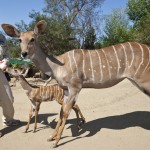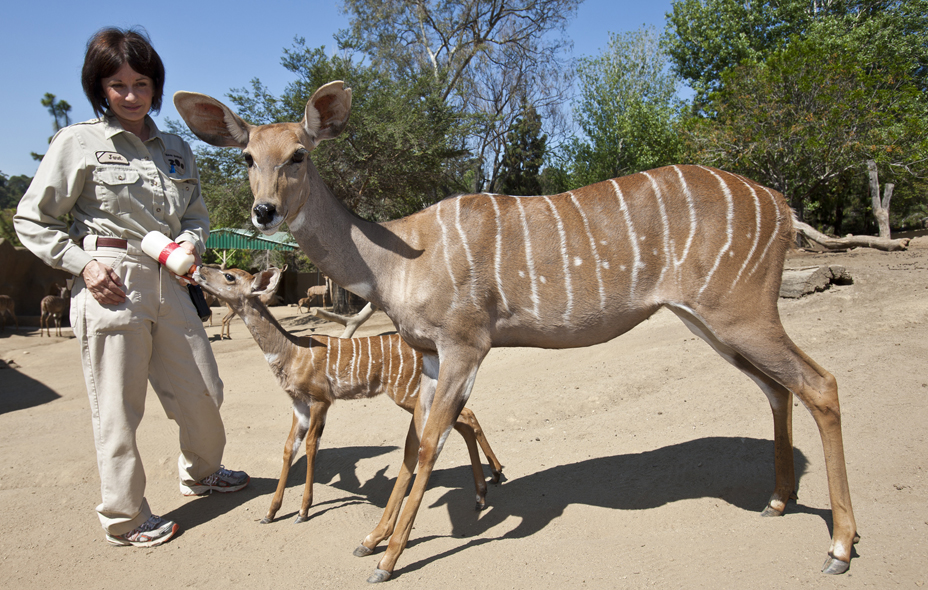

The San Diego Zoo’s neonatal assisted care unit (NACU) provides care for baby animals that are not being cared for by their natural mothers. There are five of us nursery keepers, and we provide assistance for youngsters until they are weaned, stable, and are living with their families. Things change at a moment’s notice for nursery keepers—this is the nature of our work. We never know what baby we may be caring for next or at what time of the day or night a new baby will arrive. Even with a large and diverse animal collection like we have at the San Diego Zoo and Safari Park, there are times when there are no babies that need our specialized help. This is good news, because it means that all the neonates are with their natural mothers, and that is where they should be.
But what do we nursery keepers do during the slow times?
We have recently experienced one of our slow times, so we have been working in various areas around the Zoo with the adult animals. Some of our latest stints have been with hoofed animals, giant pandas, gorillas, bonobos, primates, and the animals that are part of our shows and special programs. We have also had the privilege of standing in as keepers at the Zoo’s hospital, the Jennings Center for Zoological Medicine.
The experiences we have gained from working alongside keepers have been terrific. There are many interesting and endearing animals in our collection requiring specialized, dedicated care. We even get a chance to see some of our “nursery graduates” all grown up and living with their families. Being a keeper in a new area is fun and exciting, but it is also like being the new kid on the block. We are learning the ropes in so many new places that we’re on a learning curve every day! We return from our shifts in the Zoo with a dirty uniform and some great stories and experiences.
The awesome keeper staff shows us how food and enrichment items are presented and how often and how each indoor bedroom and exhibit area is maintained. As time goes on, we get acquainted with some of the individual personalities of the animals and pick up other useful tidbits, such as where does the poop usually land?!
Caring for adult animals is important for us as NACU keepers. We can understand more about how our baby animals will be cared for when they graduate from the nursery. We can know more about the family and herd dynamics of our collection animals and understand more about how the babies we help to care for will live as adults. We can get to know the keepers who will care for our babies after they pass from our care and what the facilities they will be living in are like. This will help us to be better caregivers and broaden our perspective of animal science and husbandry.
Janet Hawes is a lead keeper at the San Diego Zoo. Read her previous post, Visit the Mob.


